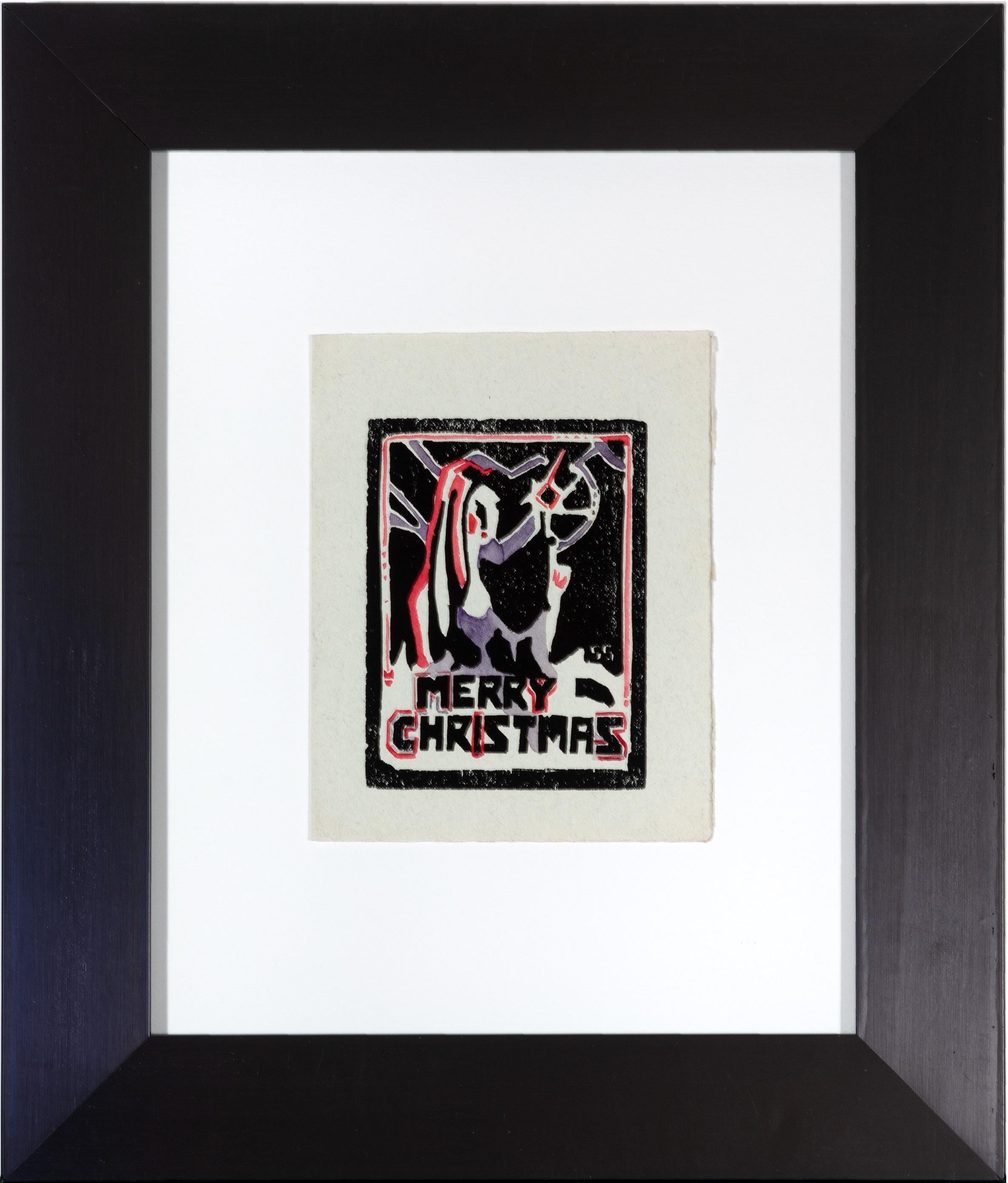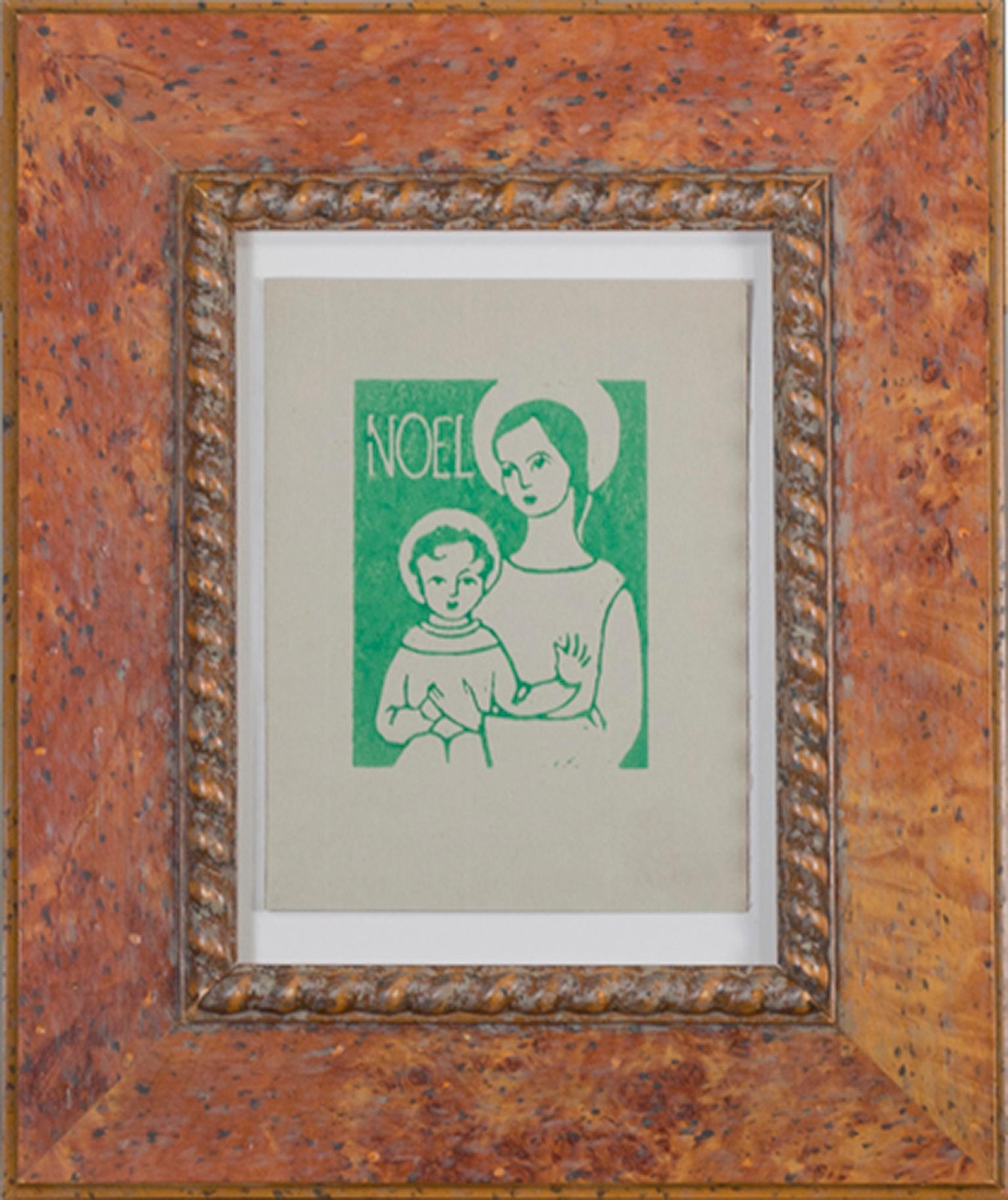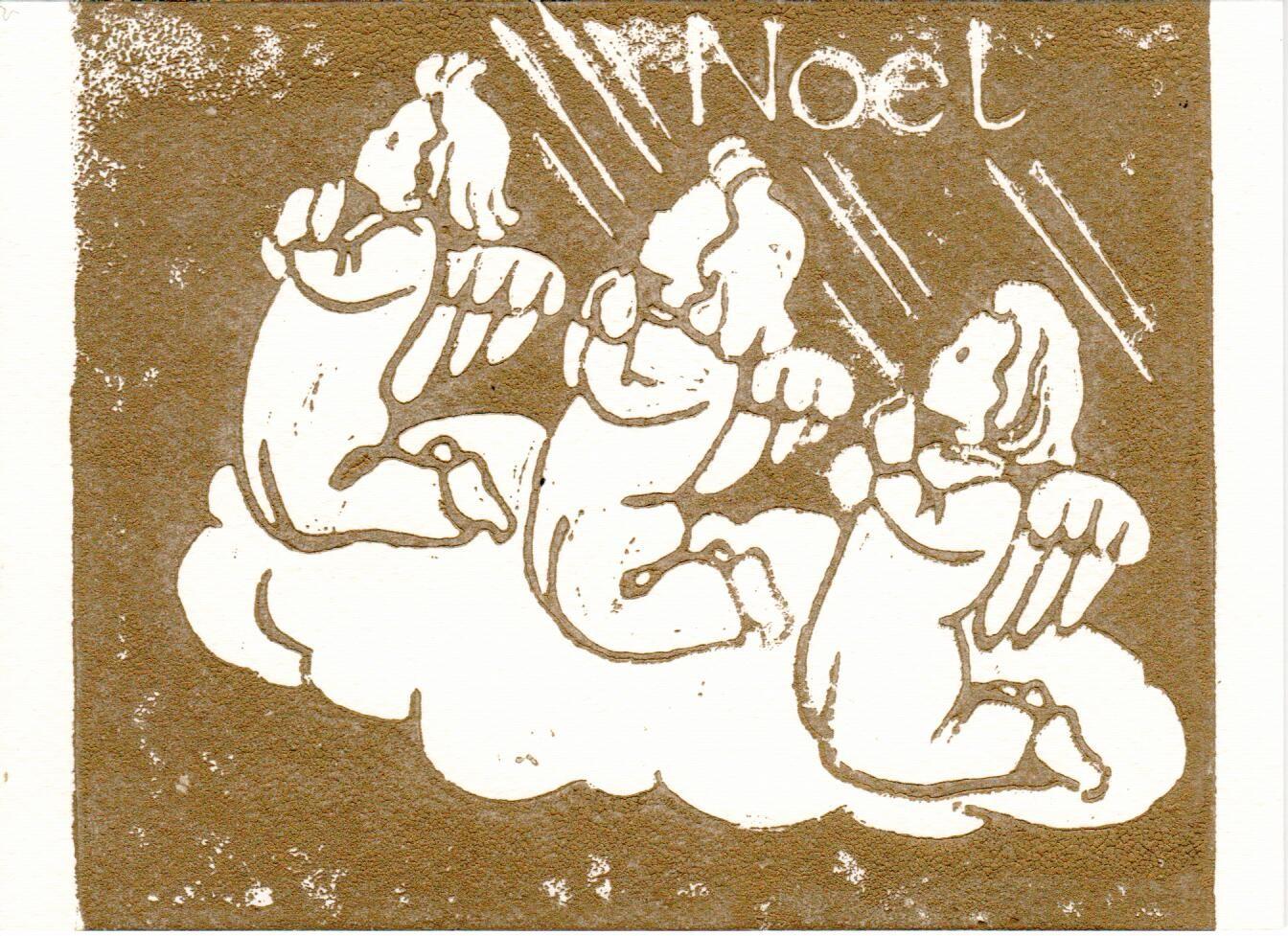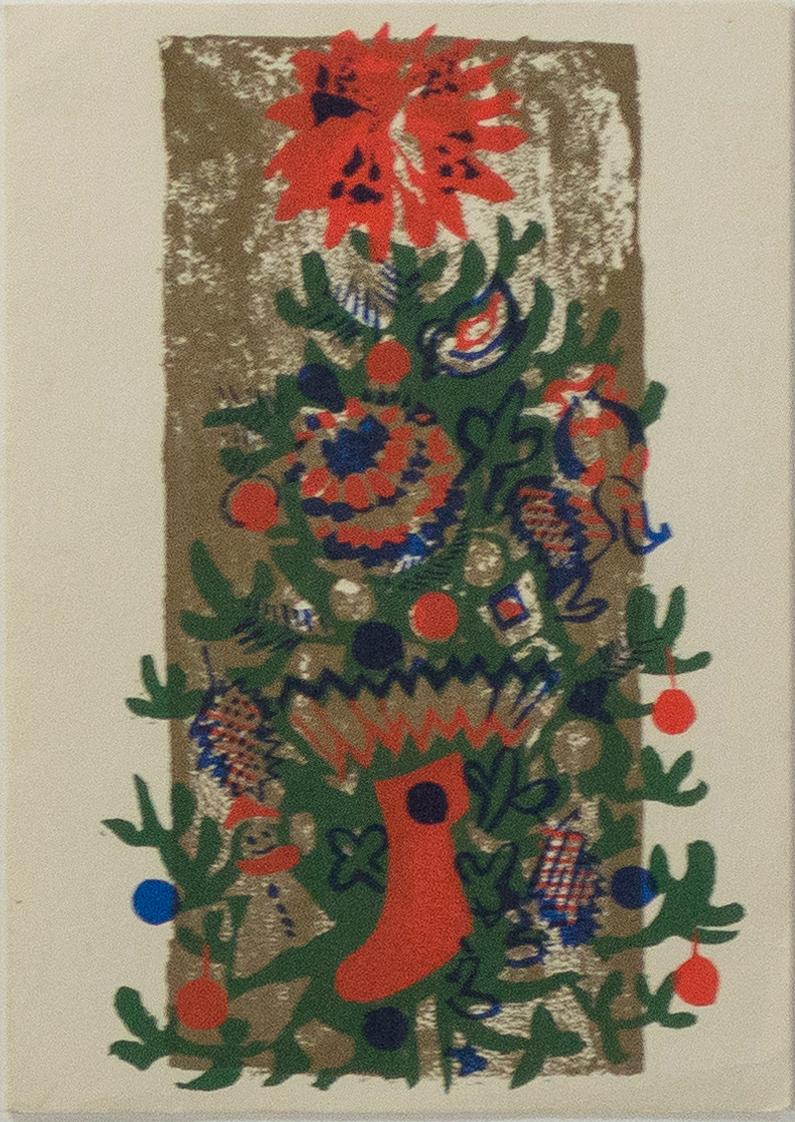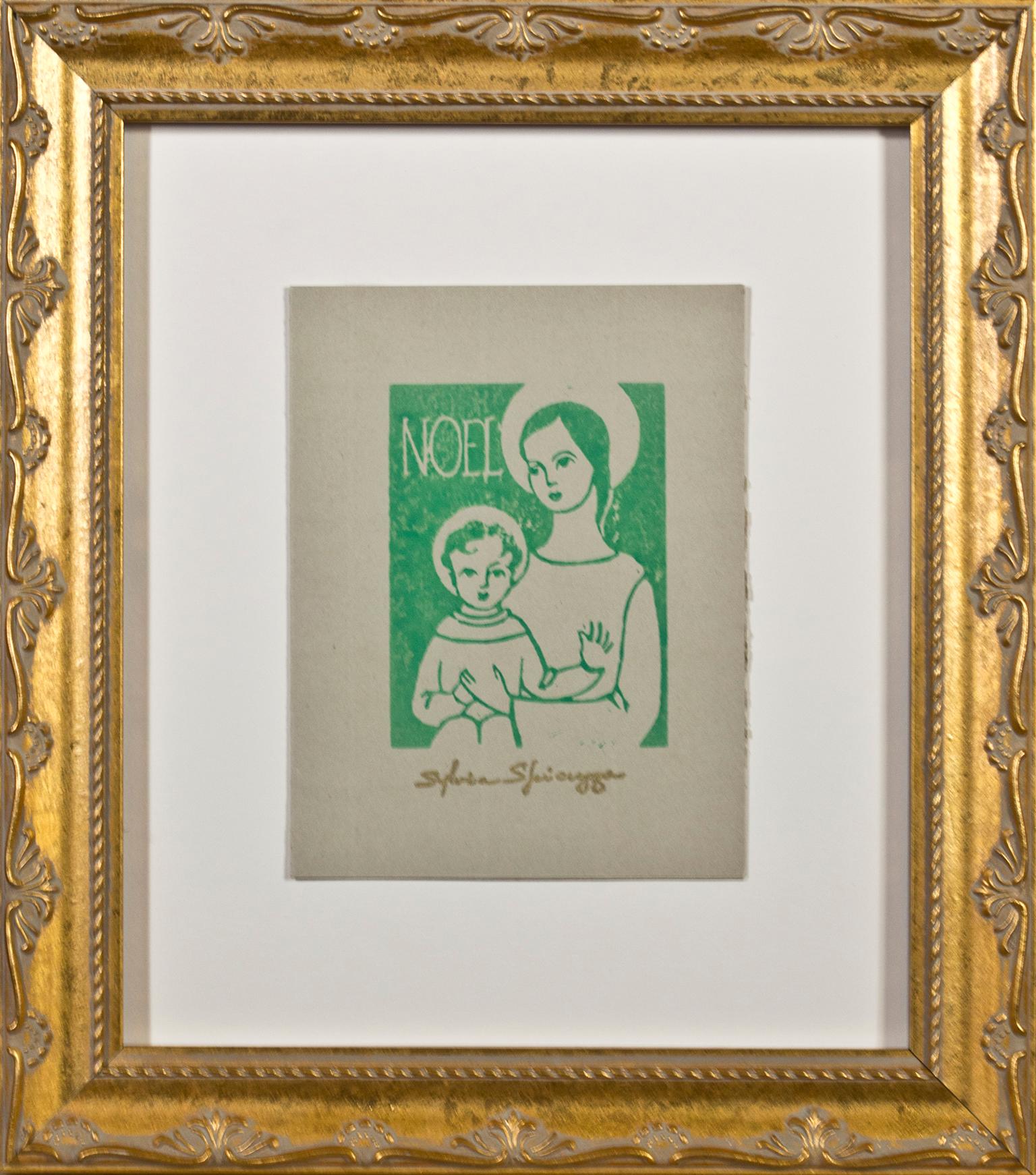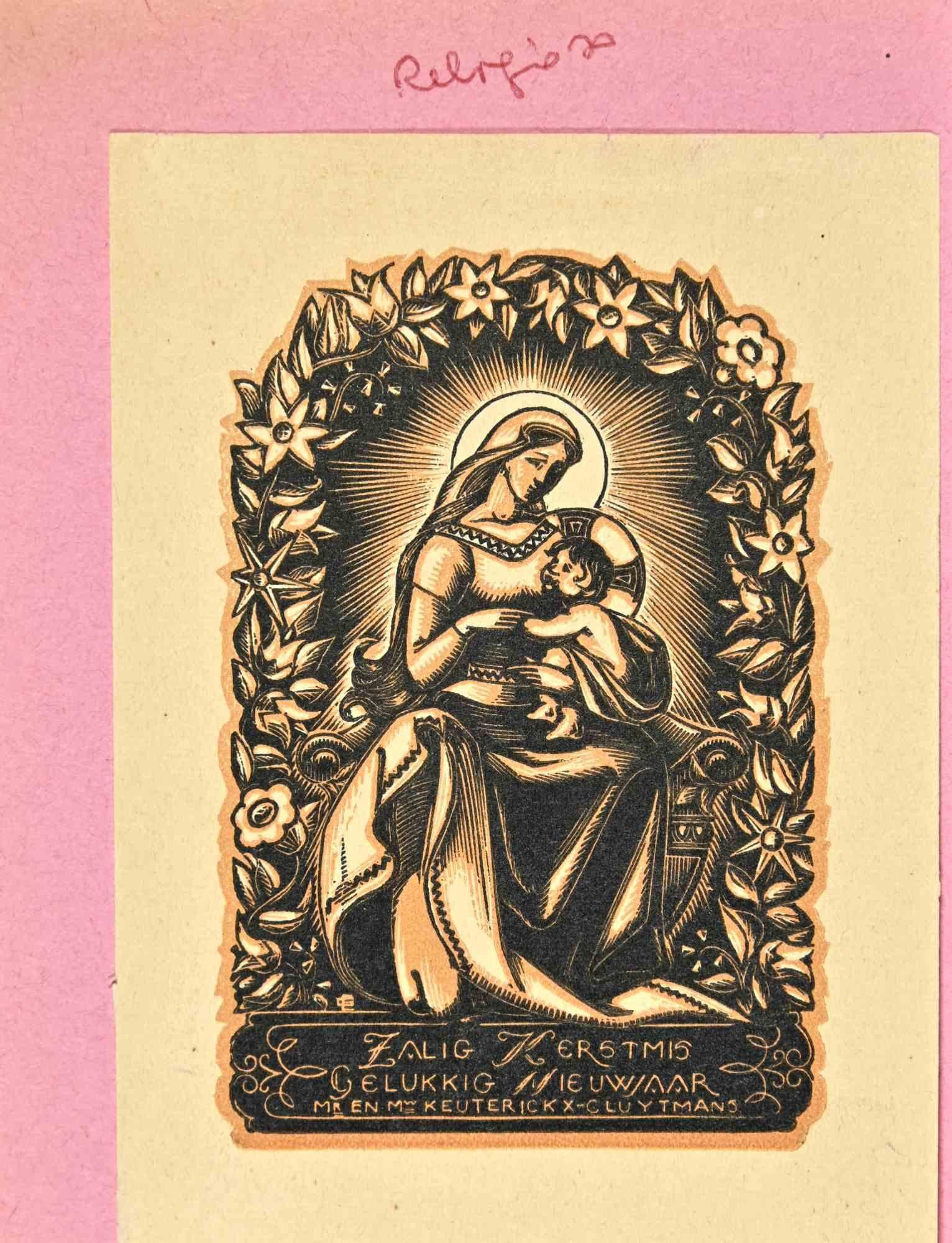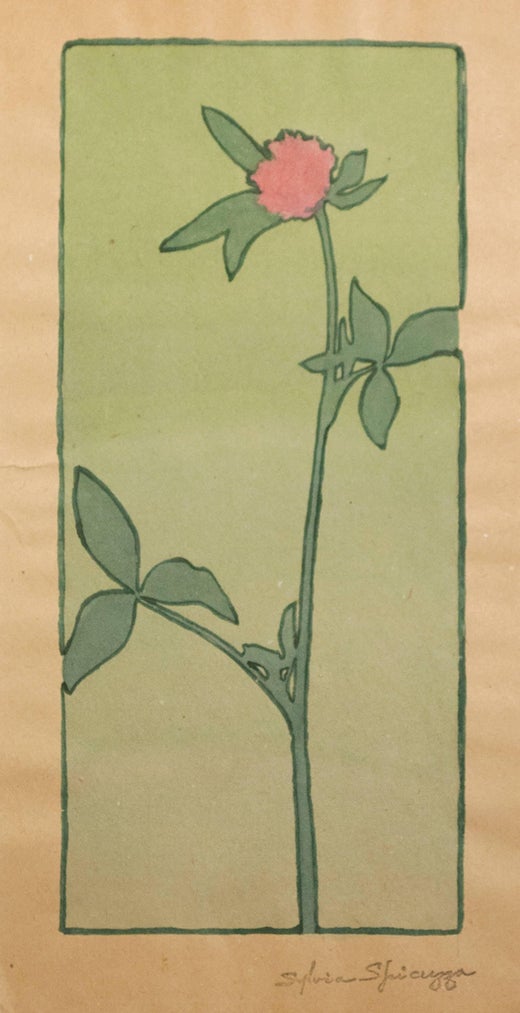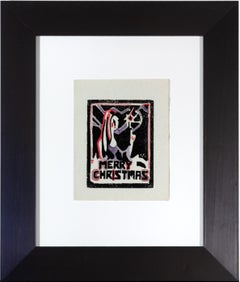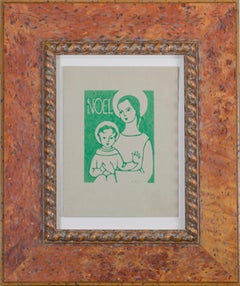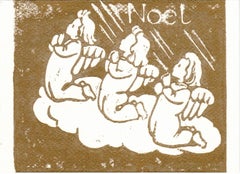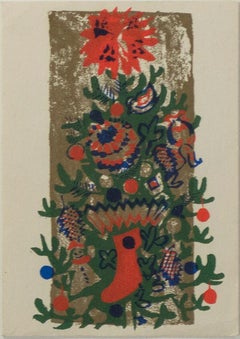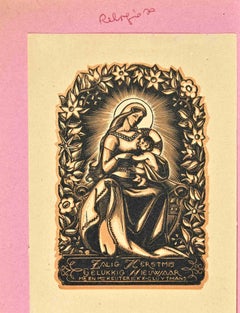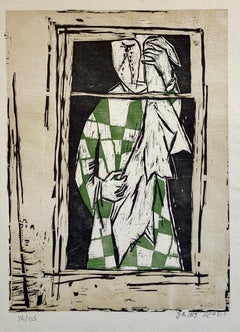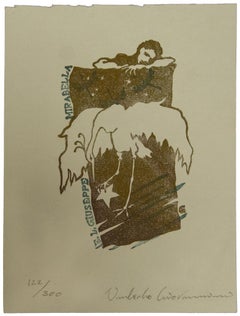Items Similar to "Merry Christmas, " Original Color Woodcut signed with stamp by Sylvia Spicuzza
Want more images or videos?
Request additional images or videos from the seller
1 of 5
Sylvia Spicuzza"Merry Christmas, " Original Color Woodcut signed with stamp by Sylvia Spicuzzac. 1950
c. 1950
$1,300
£1,007.38
€1,143.18
CA$1,863.24
A$2,046.20
CHF 1,053.31
MX$24,483.38
NOK 13,410.90
SEK 12,568.01
DKK 8,537.70
About the Item
"Merry Christmas" is an original color woodcut on paper by Sylvia Spicuzza. The artist stamped her signature lower right. This artwork features the an abstracted figure on orange paper with yellow and blue accents.
5 1/2" x 4" art
11" x 9 1/2" frame
Born in 1908, Sylvia Spicuzza was the daughter of noted painter Francesco Spicuzza. Sylvia devoted herself to teaching art to the students of Lake Bluff Elementary School in Shorewood, WI. During this time Sylvia produced a magnificent body of work that was undiscovered until her death. Sylvia's work is rich, diverse and fascinating collection of drawings, watercolors and prints from the 1920's to the 1990's. Her style ranges from early figurative drawings to regionalism, art deco, lyrical abstractions of every conceivable subject (both real and imagined), as well as figurative paintings that reflect the work of Picasso and Ernest Max in the 1930's and 1940's. Biomorphic and organic, Modernist images are presented with Sylvia Spicuzza's own unique sense of style, humor and fantasy.
- Creator:Sylvia Spicuzza (American)
- Creation Year:c. 1950
- Dimensions:Height: 11 in (27.94 cm)Width: 9.5 in (24.13 cm)
- Medium:
- Movement & Style:
- Period:
- Condition:
- Gallery Location:Milwaukee, WI
- Reference Number:Seller: 13915g1stDibs: LU60533787661
Sylvia Spicuzza
Born in 1908, Sylvia Spicuzza was the daughter of noted painter Francesco Spicuzza. Sylvia devoted herself to teaching art to the students of Lake Bluff Elementary School in Shorewood, WI. During this time Sylvia produced a magnificent body of work that was undiscovered until her death. Sylvia's work is rich, diverse and fascinating collection of drawings, watercolors and prints from the 1920's to the 1990's. Her style ranges from early figurative drawings to regionalism, art deco, lyrical abstractions of every conceivable subject (both real and imagined), as well as figurative paintings that reflect the work of Picasso and Ernest Max in the 1930's and 1940's. Biomorphic and organic, Modernist images are presented with Sylvia Spicuzza's own unique sense of style, humor and fantasy. Exhibitions David Barnett Gallery, Milwaukee, Wisconsin Education Northwestern University, MFA, Illinois
About the Seller
4.9
Gold Seller
Premium sellers maintaining a 4.3+ rating and 24-hour response times
Established in 1966
1stDibs seller since 2017
452 sales on 1stDibs
Typical response time: 1 hour
- ShippingRetrieving quote...Shipping from: Milwaukee, WI
- Return Policy
More From This Seller
View All'Merry Christmas' original color woodcut on paper, signed in block
By Sylvia Spicuzza
Located in Milwaukee, WI
Art: 5 1/2 x 4 3/8"
Frame: 10 1/8 x 8 1/8"
Original color woodcut on paper, signed in block.
Born in 1908, Sylvia Spicuzza was the daughter of noted painter Francesco Spicuzza. Sylvia devoted herself to teaching art to the students of Lake Bluff...
Category
1950s Figurative Drawings and Watercolors
Materials
Woodcut
"Noel, " Relief Print signed by Sylviz Spicuzza
By Sylvia Spicuzza
Located in Milwaukee, WI
"Noel" is an original relief print by Sylvia Spicuzza. A holiday themed print, this features the image of the virgin Mary and baby Jesus.
Image: 4" x 3"
...
Category
Late 20th Century American Modern Figurative Prints
Materials
Linocut
'Noel' Linocut with estate signature
By Sylvia Spicuzza
Located in Milwaukee, WI
4.88 x 6 inches, folded sheet - David originally printed this as a greeting card in 2008 from Sylvia's block. In 2022 he had it cut down to the image size and stamped on face with es...
Category
Early 2000s Figurative Prints
Materials
Linocut
'O'Tannenbaum' original color silkscreen signed on verso, Christmas tree, winter
By Ruth Grotenrath
Located in Milwaukee, WI
'O'Tannenbaum' (Artist's #30129) is an original color silkscreen print by Ruth Grotenrath, signed by the artist on verso. Influenced by the works of Expressionists like Henri Matisse and the woodblock prints of early modern Japanese artists like Katsushika Hokusai, Ruth Grotenrath's 'O'Tannenbaum' combines the expressive use of color of the former with the precision of the latter to create a Christmas card that is as vibrant as it is subtle. Depicting a pine tree decked with ornaments and stockings, Grotenrath has rendered the tree-topping star as a ball of flames to analogize the warmth and spirit of the holiday season.
Original color silkscreen
6.625 x 4 inches, silkscreen
14.375 x 11.375 inches, frame
Signed in screen on verso inside-letter
Framed to conservation standards using archival materials including 100 percent rag matting and mounting materials, Museum Glass to inhibit UV damage and reduce glare, and housed in a gold finish wood frame.
"The paintings of Ruth...
Category
1940s Expressionist Interior Prints
Materials
Screen
"Noel, " Religious Linocut in Green on Tan Paper signed by Sylvia Spicuzza
By Sylvia Spicuzza
Located in Milwaukee, WI
"Noel" is an original linocut in green ink on tan paper by Sylvia Spicuzza. The artist stamped her signature lower center. This artwork features the Virgin Mary holding the baby Jesu...
Category
1950s American Modern Figurative Prints
Materials
Linocut
"Noel, " Religious Linocut in Blue on Tissue Paper signed by Sylvia Spicuzza
By Sylvia Spicuzza
Located in Milwaukee, WI
"Noel" is an original linocut on tissue paper by Sylvia Spicuzza. The artist stamped her signature lower right. This artwork features the Virgin Mary holding the baby Jesus. Both fig...
Category
1950s American Modern Figurative Prints
Materials
Linocut
You May Also Like
Ex Libris - Zalig Kerstmis - Woodcut - Mid 20th Century
Located in Roma, IT
Ex Libris - Zalig Kerstmis is an Artwork realized in Mid 20th Century.
Woodcut.
Good conditions.
The artist wants to define a well-balanced composition, through preciseness.
Category
Mid-20th Century Modern Figurative Prints
Materials
Woodcut
$138 Sale Price
35% Off
Japanese Christmas Tree - Woodcut Print - Mid-20th Century
Located in Roma, IT
Japanese Christmas Tree is an original modern artwork realized by a Japanese artist in the mid-20th Century.
Original colored woodcut on cardboard. Image Dimensions: 15 x 10 cm
Th...
Category
Mid-20th Century Modern Figurative Prints
Materials
Woodcut
1959 Israeli Yosl Bergner Modernist Color Woodcut Woodblock Print
By Yosl Bergner
Located in Surfside, FL
Abstract Composition, 1959 Silkscreen Lithograph "Phoenix".
This was from a portfolio which included works by Yosl Bergner, Menashe Kadishman, Yosef Zaritsky, Aharon Kahana, Jacob Wexler...
Category
1950s Modern Figurative Prints
Materials
Lithograph, Screen
Ex Libris - Original Woodcut by Umberto Giovannini - 1980s
Located in Roma, IT
"Ex Libris" is an original woodcut on ivory-colored paper realized by Umberto Giovannini.
Hand-signed on the lower in pencil. Numbered, on the lower left, edition of 122/300 prints....
Category
1980s Contemporary Figurative Prints
Materials
Woodcut
Hilary Hennes 'Christmas' (c.1940), Linocut Hilary Miller Modern British Art
By Hilary Hennes
Located in London, GB
To see our other Modern British Art, including others by Hennes, scroll down to "More from this Seller" and below it click on "See all from this Seller" - or send us a message if you...
Category
1940s Modern Figurative Prints
Materials
Watercolor, Linocut
Best Wishes from Fujikawa Galleries - Woodcut Late 20th Century
Located in Roma, IT
Best Wishes from Sujikawa Galleries is an original xilography on paper realized by a Japanese artist of the XX century, with an inscription of " Merry Chri...
Category
Late 20th Century Contemporary Figurative Prints
Materials
Woodcut
